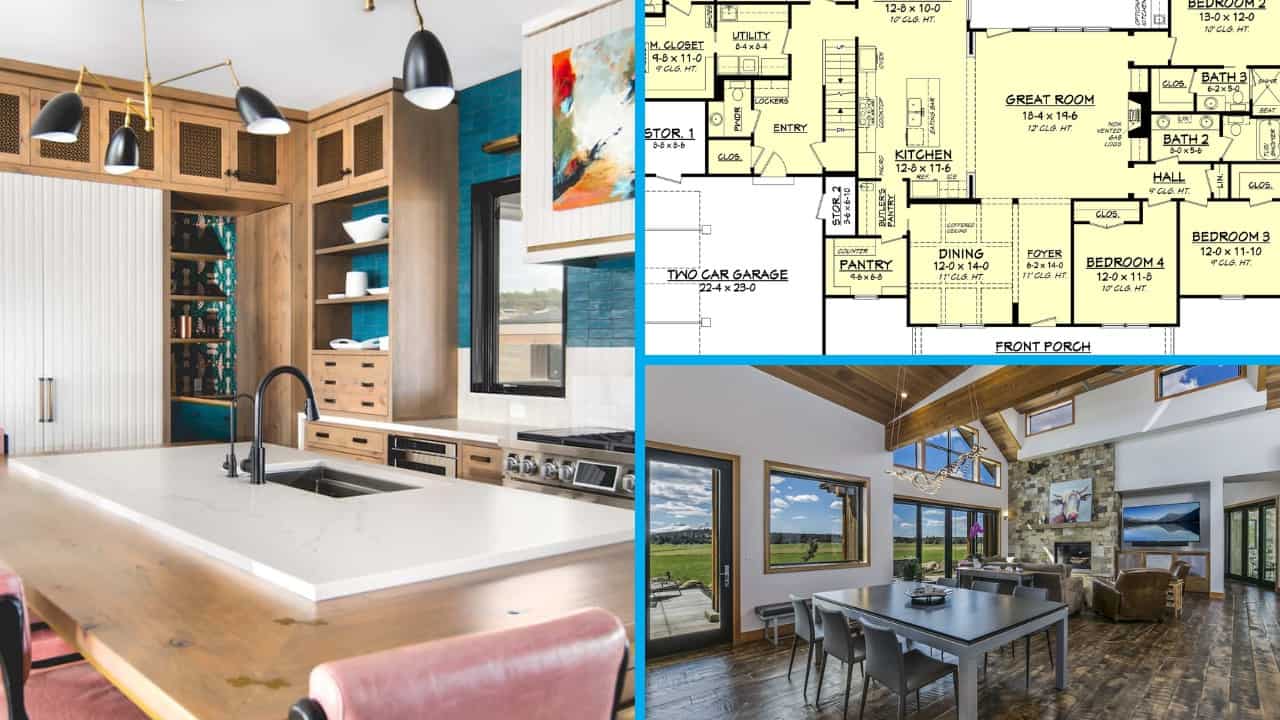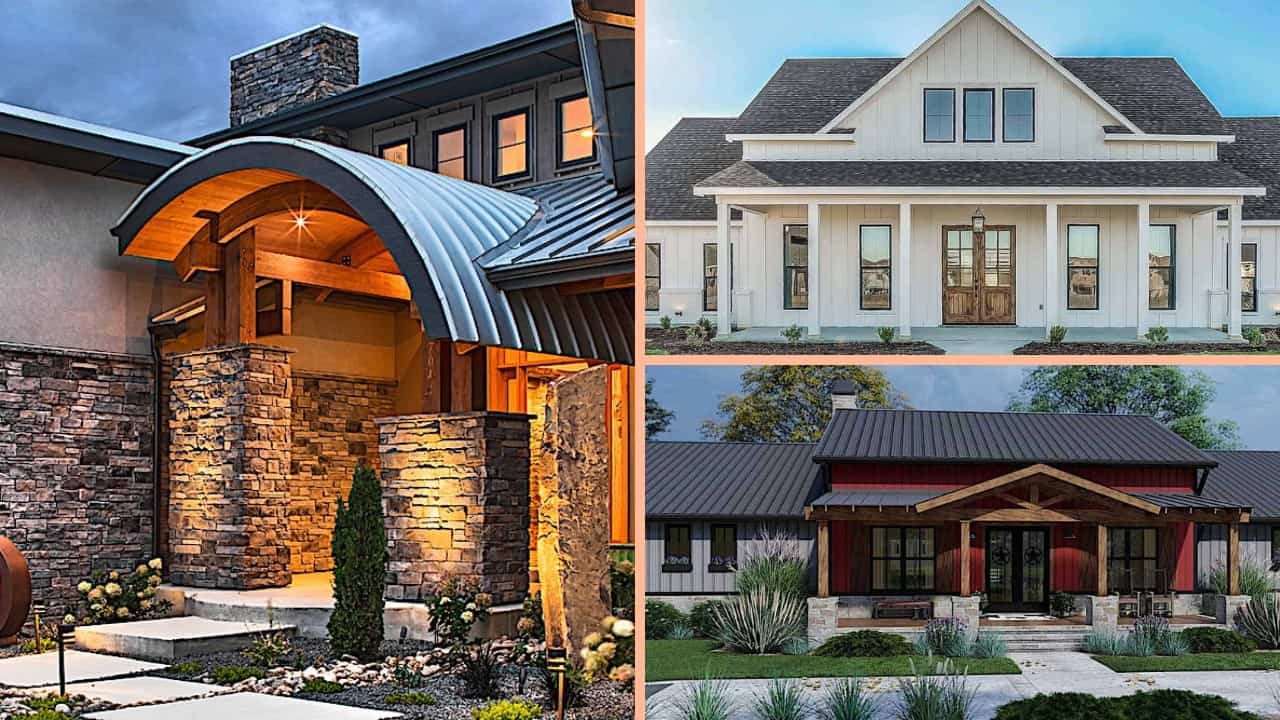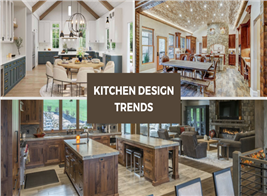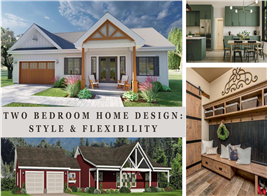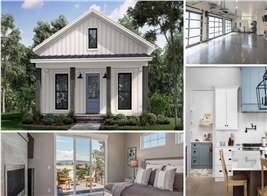Why Ceilings Matter in House Design
By Rexy Legaspi | Updated March 16, 2023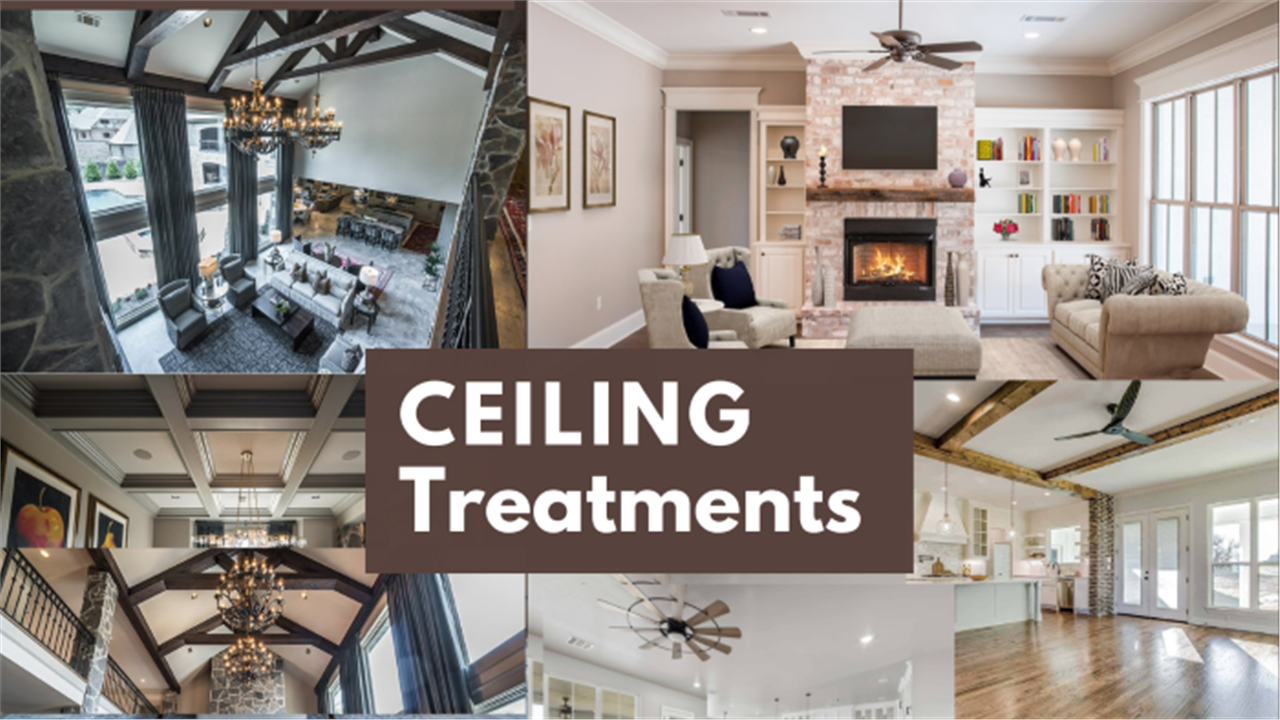
Function and Aesthetics in Decorative Ceiling Treatments
Have you ever looked up at the ceilings of old churches and marveled at the frescoes, stars, and other decorative accents they have on them? Nothing boring about them – when compared with the bland white or matte ones in some contemporary homes.
While modern homes may not want intricate touches on their ceilings, there are many options available to make the “fifth wall” more fascinating and eye-catching. With ceiling treatments, the white unadorned ceiling – be it a standard eight-footer or a taller one (ranging from 9 to 12 feet or more) – can be transformed into a visually appealing space. Many experts agree that a little overhead drama can jazz up a room that otherwise feels dull.
We highlight the ceiling treatments available to homeowners who may be open to adding these touches to their new house design or remodel to make the ceilings in their homes unique and more extraordinary – if not actual statement pieces.
This lovely master bedroom in a one-story, four-bedroom contemporary Prairie style home features a conventional, smooth white ceiling. The all-white motif in the room is accented by light brown and beige furnishings to add a little bit of color. A burnt gold chandelier makes the white ceiling more interesting and captivating (Plan #161-1085).
A Ceiling Defined
A ceiling is described as an overhead exterior surface that covers the upper limit of a room and conceals the underside of the floor or roof structure above. While not a structural element, the ceiling is intended to hold off heat from the sun or the cold weather. Given its mundane description and purpose, it’s not surprising that in modern times, the ceiling is often left out of the conversation during the design process.
As we go through architectural cycles, more designers than ever seem to be borrowing from earlier historical periods that featured intricate ceiling designs in churches, palaces, huge estates, and mansions, and these ceiling treatments add charm and beauty to the space. From vaulted to beamed, barrel, tray, coffered, suspended, painted, and patterned, many modern homes are feature innovative ceiling variations.
Types of Ceiling Treatments
Conventional
Usually eight to nine feet high, this is the simplest ceiling form and is standard in most homes. It is a flat, seamless, and plain surface with a drywall and white paint finish. The conventional ceiling can be raised to ten feet or more to give the room and stairwells a breezier and more spacious feel.
An amazing one-story Country style home features a simple conventional high ceiling with recessed lights in some rooms and chandeliers in others, as in this dining room. The 2,686-square-foot residence has an open floor plan. four bedrooms with walk-in closets, two bathrooms, a powder room, a Great Room, and a chef-worthy kitchen (Plan #142-1169).
Coffered
Coffered ceilings, which originated in ancient Greece, are often found in luxury homes, churches, libraries, and other stately public buildings and structures. With their three-dimensional grooved-wood panels, they have a stunning classic look that adds depth and character to the ceiling.
Not an average construction or DIY renovation project, a coffered ceiling is a more expensive option because it requires highly skilled carpenters and a specialized installation process.
Top: Stacked-stone pillars and coffered ceilings add to the Old-World charm of this Great Room in a 1.5-story, European style home with Tudor influences (Plan #198-1032). The 3,480-square-foot home includes three bedrooms, three bathrooms, a powder room, library, game room, home office, mudroom, wine cellar, and other amenities. Bottom: For more contrast and added drama, how about this dark-painted coffered ceiling in the formal dining room of a luxurious two-story European style home with five bedrooms and 6.5 baths (Plan #193-1125).
Barrel Vault
Among the types of vaulted ceiling styles that also include dome and groin vaults, the barrel vault is the simplest – yet perhaps most graceful – form of a vault. For background, a vaulted ceiling is a self-supporting arch above walls and beneath a roof that extends upward to take advantage of unused roof structure space.
The barrel vault – also known as a tunnel vault or a wagon vault – dates to the Babylonian and Sumerian periods when clay mortar and fired brick were popular. The barrel vault resembles a barrel cut in half and is really a series of arches placed side by side one after the other. Barrel vaults can be incorporated in foyers, hallways, kitchens, bedrooms, bathrooms, and Great Rooms.
Exposed Timber/Vaulted
Common in rustic and country style homes, this ceiling type features high central arches built out of structural timbers and finished with materials like wood planks, drywall, tile, and T-bar beams. Vaulted ceilings with exposed timber beams can be used in Great Rooms, open kitchen-dining rooms, patios, front entryways, and foyers.
Walk into the spacious Great Room of this 3,623-square-foot Ranch home and your gaze is directed upward to its eye-catching exposed-timber vaulted ceiling. The exposed beams – though not the vault – continue into the kitchen and dining area. The home, with its rustic Country style touches, includes two bedrooms, two bathrooms, a powder room, a kitchen with two islands and a walk-in pantry, a dining area, and a family room that opens to the rear covered porch (Plan #161-1094)
Tray
A multi-level type with a perimeter that is at least eight feet high, the tray ceiling features a central raised portion that is a foot or higher. Also called an inverted, panned, or recessed ceiling, it offers a lot of options that make the ceiling the focal point such as painting on the trim, installing hidden tube lighting along the perimeter of the tray, or hanging a chandelier, pendant light, or ceiling fan.
The costs for tray ceilings are not too pricey. In new homes, the installation can run between $3 to $5 per square foot – depending on the home’s location, the room size, and the amount of work required.
A comfortably luxurious master suite in a spectacular two-to-four-bedroom rustic Ranch home comes with a tray ceiling with recessed lights, painted trim, and a ceiling fan. The 3,469-to-5988-square-foot Ranch has an open-floor-plan concept design, Great Room, huge kitchen, family room, wine cellar, library, and four garage bays – with an unfinished basement that may be finished at the option of the owners for the extra bedrooms and square footage (Plan #161-1091).
Exposed Beams
Beamed ceilings are common in cabins, lodges, chalets, and some rustic vacation homes. In contemporary homes, beamed ceilings are found in hallways, corridors, and living and dining rooms. You can use beams in a variety of ways.
For example, think of pairing them with exposed brick walls or exposed ceilings that are popular in commercial buildings. For extremely high ceilings, a T-bar beam will help “fill up” the overhead space and make it a focal point.
You can also opt for a solitary beam with a fascinating light fixture – a chandelier or stunning pendant lights will do the trick.
Top: This pair of timber beams in a conventional plain ceiling in the Great Room of a one-story Country style home results in an exciting and stylish space. The beautiful 2,686-square-foot residence with an open floor plan includes covered front and rear porches, four bedrooms with walk-in closets, two bathrooms, a powder room, and a Great Room, among other features (Plan #142-1169). Bottom: This family room in a luxurious Rustic Country style home is adorned with rough-hewn ceiling beams that reinforce the interior design (Plan #198-1094).
Patterned
If you want to infuse something new and a little bit daring to your ceiling, try wallpaper, artwork, or bright paint for a splash of color, or even tile mosaic. Start with a bedroom if you're not quite ready to display this “wild” and innovative side to the whole world.
Talk about wild and colorful! Note the sky-and-cloud pattern in the center of this tray ceiling and the beige decorative trim framing it. A child's bedroom in a majestic, high-ceilinged two-story, 7,587-square-foot Mediterranean home, the space features walls painted in a vibrant shade of purple paired with light blue curtains, beddings, and an area rug in another shade of purple. The spectacular residence has five bedrooms, six baths, two powder rooms, a grand porch portal, a family room with a fireplace, a Great Room, a kitchen with a walk-in pantry, and a huge outdoor living space (Plan #195-1216).
Adding Decorative Trim
If you have a conventional smooth white ceiling and want to add a little pizzazz to it, consider a few decorative trim options to perk up the space.
Crown Molding
How many times have we heard or seen crown molding on HGTV shows? Molding is described as a strip of material with various profiles used to cover transitions between surfaces or for ornamentation. It adds stylish elegance and chic to any space and matches many architectural styles.
And crown molding, which decorates the transition between walls and the ceiling, is described as the “crowning” architectural feature.
Crown molding is usually made from solid milled wood or plaster and has been used in ceiling decor for centuries. While it was most prevalent in classic refined interiors – like the palaces of European royalty and historic – today crown molding is used only for decorative purposes. It is versatile in the sense that it can be applied to the ceiling of almost any room including a bathroom, dining room, living room, kitchen, or bedroom.
Medallions for Chandeliers
Ceiling medallions, which appeared in American homes as early as the 1700s and in later Victorian styles homes, are centerpieces surrounding a chandelier or a hanging light fixture. Both decorative and functional, they served as statement pieces in the parlors of the wealthy – and as a camouflage to cover and conceal all the soot on the ceiling, a result of the candles, whale-oil lanterns, kerosene, and gas lanterns that were used for indoor lighting during the eighteenth and nineteenth centuries.
The early medallions were simple, raised rings around a light fixture in a circle or oval. Toward the late nineteenth century and the height of the Rococo Revival style, these ceiling medallions became bigger and more elaborate – with curves, leaves, and flowers carved onto them.
Ceiling medallions are still around today … and are available in most stores and in places that specialize in lighting accessories.
Kitchen, Bathroom, Living Room
Ceiling treatments for the kitchen, bathroom, and living room that are different from the other spaces in the house will enhance the look of the rooms and make them more interesting.
Here’s a state-of-the-art kitchen perfect for a two-story Modern style home that includes five bedrooms, 5.5 baths, and a second-floor master suite. The light gray conventional ceiling with its smooth surface breaks the dark brown tones that dominate the kitchen area. White pendant lights hang from a gray and brown metal grid at the center of the ceiling (Plan #161-1084).
How about a painted ceiling in the bathroom to make it unconventional and fascinating – as in this bathroom in a rustic 3,469-square-foot ranch style home with two bedrooms and 2.5 baths? For illumination, there are hanging lights and one bright light bulb at the center of the ceiling (Plan #161-1091).
A conventional smooth ceiling in the kitchen area and a beamed one in the living space make for an innovative combination in this Great Room of a two-story, five-bedroom, 5.5-bath Luxury Cottage style home (Plan #198-1117).
Whether you fancy them plain and smooth, colorful with paint and artwork, beamed, vaulted, or with decorative trim, the point is to make ceilings a part of the design blueprint of your home.















